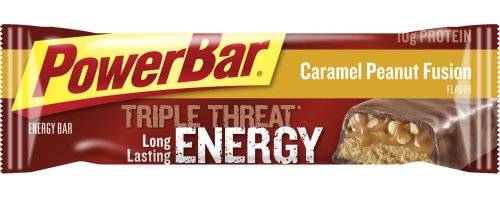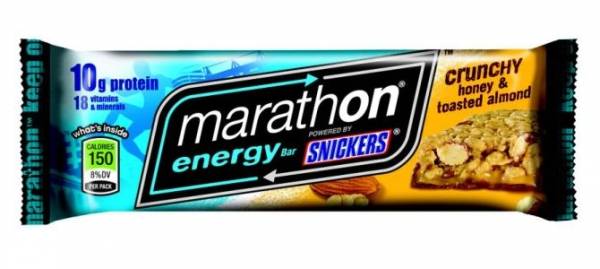I vividly remember the first time I tried a peanut butter Clif Bar. It was 1994 and my friend Matt stopped in town on his way driving across the country. As Matt hopped from town to town, he skipped the drive-throughs and kept his energy up behind the wheel, snarfing down Clif Bars the whole way. As we visited in Portland, he gave me one, exclaiming, “Dude, you have to try one of these.”
My Love Affair With Bars
I felt like the peanut butter Clif Bar seemed to be too good to be true – more like a peanut butter cookie than some health food. That’s why I ate roughly two a day, every day, month after month. It was the pleasure without the guilt! After all, the package (and my friend Matt) told me they were good for me. Words like organic and no trans fat eased my suspicions that somehow energy bars were secretly bad for me.
Like many love affairs, my affinity with bars comes and goes. For the better part of the past two decades, I have gone from one bar to the next. I have a lifestyle and profession that requires constant energy and lots of food to sustain it. I often have to eat on the run, and bars have long been a main staple in my diet as a quick and convenient food choice.
I surf from bar to bar constantly looking for one with a good macronutrient profile (high protein and low saturated fat), as well as one that doesn’t have too many ingredients. Obviously, price is also a consideration and, of course, when it comes to food, taste reigns supreme.
While all of these are important factors in choosing a bar, I can’t help but wonder if there’s a more important question than which bar? That question is, should I really be eating any bars?
Where Did They Come From and Where Are They Going?
In the year 2014, bars are now a legitimate food category (at least from a business perspective). They are considered an acceptable snack or even meal replacement by many. Walk into any convenience store, gas station, or supermarket in America and you will see dozens of choices of bars from high protein to “healthy” candy-like energy bars. This all seems natural and normal to us. Of course, it wasn’t that long ago that people didn’t eat things that came out of a box or a wrapper.
Energy bars were the brainchild of the Pillsbury Corporation, who in the 1960s, capitalized on the popularity of the national space program by introducing the Space Food Stick. Since then, energy bars have become their own food category. While the Space Food Stick was more or less a novelty, things got serious in the mid 1980s with the introduction of the first energy bar for athletes, Power Bar.

Since that time the market has skyrocketed and the statistics are staggering. The current energy bar market in the United States is around six billion dollars and has more than doubled in the past decade. The energy bar sector continues to be red hot and shows no sign of slowing down. For the past ten years, the energy bar market has grown at nearly three times the rate of the packaged foods sector. The USDA estimates that we now get a third of our daily calories from snacks.
Nowadays you can find a bar for everyone, from elite athletes to diet bars for people looking to lose weight. There are high protein bars, vegan bars, all natural low ingredient bars, and meal replacement bars. Indeed, there’s a bar for everyone. And many of them taste delicious as well. After all, these bars are food – theoretically.
Bars and the Fitness Business
At my last company, a private training studio, we hocked bars like they were going out of style. For the athlete clients there were the performance and high protein bars. For our weight loss clients there were plenty of choices as well such as low calorie and fat free bars. Obese clients were told they needed to control their calories going in and that bars, shakes, and supplements were the best way to do so. Furthermore, clients were made to feel at ease because these bars tasted great and they wouldn’t have to give up enjoying food.

I recall being utterly bewildered at a presentation from a bar manufacturer’s representative where we were given complimentary samples of bars ”made with real Reese’s Peanut Butter Cups.” They tasted great and our company started selling them like hotcakes the next week. Like my brief obsession with the peanut butter Clif Bar, all seemed too good to be true with bars like these. A healthy Reese’s Peanut Butter Cup? Talk about having my cake and eating it, too! While the bars were a hot seller for a while and I enjoyed the taste, the whole thing didn’t sit well with me. Somehow, eating and selling bars like these didn’t feel right.
The fitness industry is at the forefront of our country’s healthcare crisis and obesity epidemic. We in fitness are charged with the task of helping people get healthy, fit, and well. Food is a part of that process and a big one. So what about bars? With this question we circle back to my own personal dilemma and a query that has been eating at me for the better part of two decades – are bars good for us?
In part two of this article on bars I’ll seek to answer that question, breaking down bars philosophically as well as from a health and wellness perspective in terms of what the science says.
References:
1. “Nutrition runs up front in the US snack bar race: Rabobank,” Bakeryandsnacks.com.
2. “Snack Bar Growth Shows No Sign of Slowing,” QSRmagazine.com.






